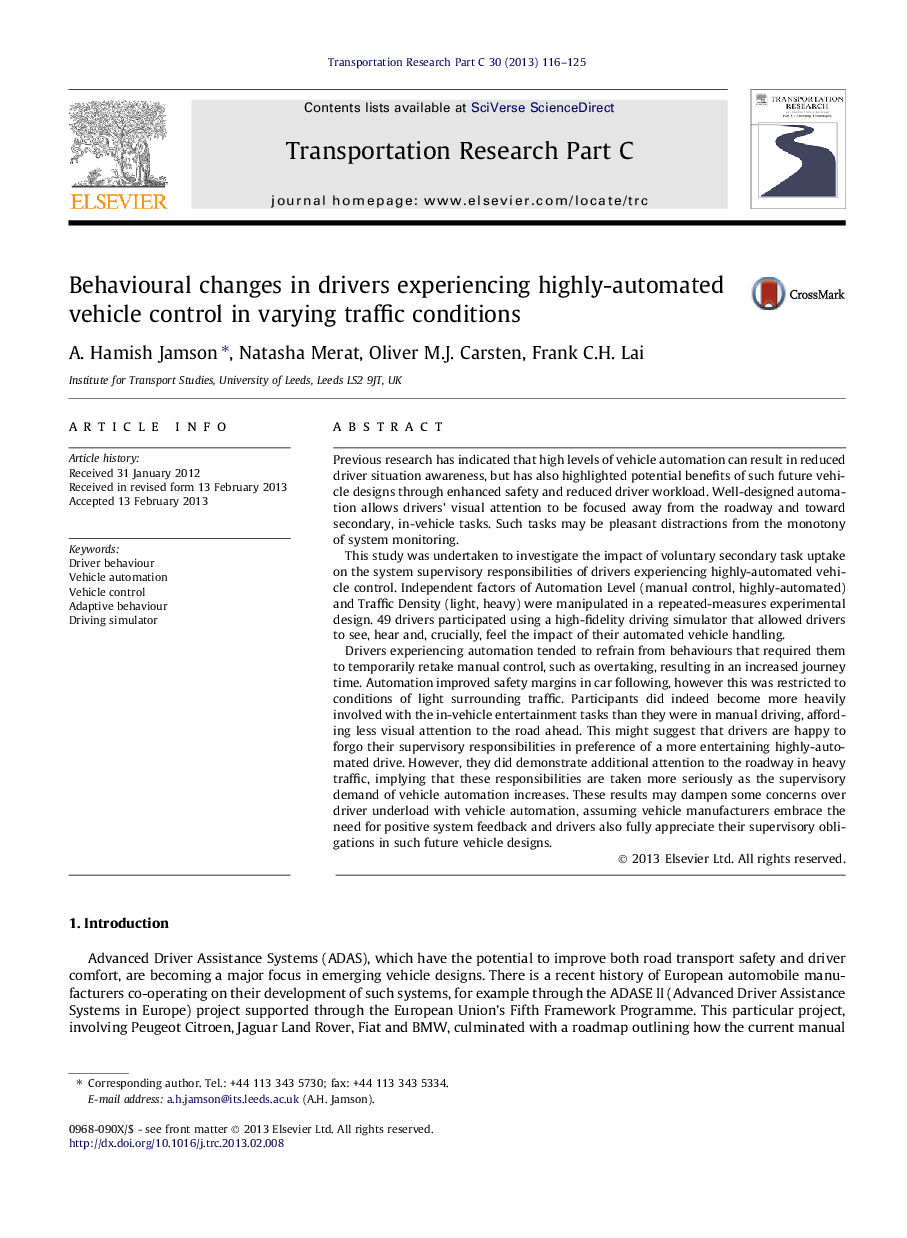| کد مقاله | کد نشریه | سال انتشار | مقاله انگلیسی | نسخه تمام متن |
|---|---|---|---|---|
| 526542 | 869131 | 2013 | 10 صفحه PDF | دانلود رایگان |

Previous research has indicated that high levels of vehicle automation can result in reduced driver situation awareness, but has also highlighted potential benefits of such future vehicle designs through enhanced safety and reduced driver workload. Well-designed automation allows drivers’ visual attention to be focused away from the roadway and toward secondary, in-vehicle tasks. Such tasks may be pleasant distractions from the monotony of system monitoring.This study was undertaken to investigate the impact of voluntary secondary task uptake on the system supervisory responsibilities of drivers experiencing highly-automated vehicle control. Independent factors of Automation Level (manual control, highly-automated) and Traffic Density (light, heavy) were manipulated in a repeated-measures experimental design. 49 drivers participated using a high-fidelity driving simulator that allowed drivers to see, hear and, crucially, feel the impact of their automated vehicle handling.Drivers experiencing automation tended to refrain from behaviours that required them to temporarily retake manual control, such as overtaking, resulting in an increased journey time. Automation improved safety margins in car following, however this was restricted to conditions of light surrounding traffic. Participants did indeed become more heavily involved with the in-vehicle entertainment tasks than they were in manual driving, affording less visual attention to the road ahead. This might suggest that drivers are happy to forgo their supervisory responsibilities in preference of a more entertaining highly-automated drive. However, they did demonstrate additional attention to the roadway in heavy traffic, implying that these responsibilities are taken more seriously as the supervisory demand of vehicle automation increases. These results may dampen some concerns over driver underload with vehicle automation, assuming vehicle manufacturers embrace the need for positive system feedback and drivers also fully appreciate their supervisory obligations in such future vehicle designs.
► Drivers show more of a propensity to become involved with in-vehicle entertainment tasks.
► Drivers are receptive to the demands of heavy traffic, focussing more attention to the roadway than in light traffic.
► Drivers change lanes less frequently in order to overtake slower moving traffic.
Journal: Transportation Research Part C: Emerging Technologies - Volume 30, May 2013, Pages 116–125